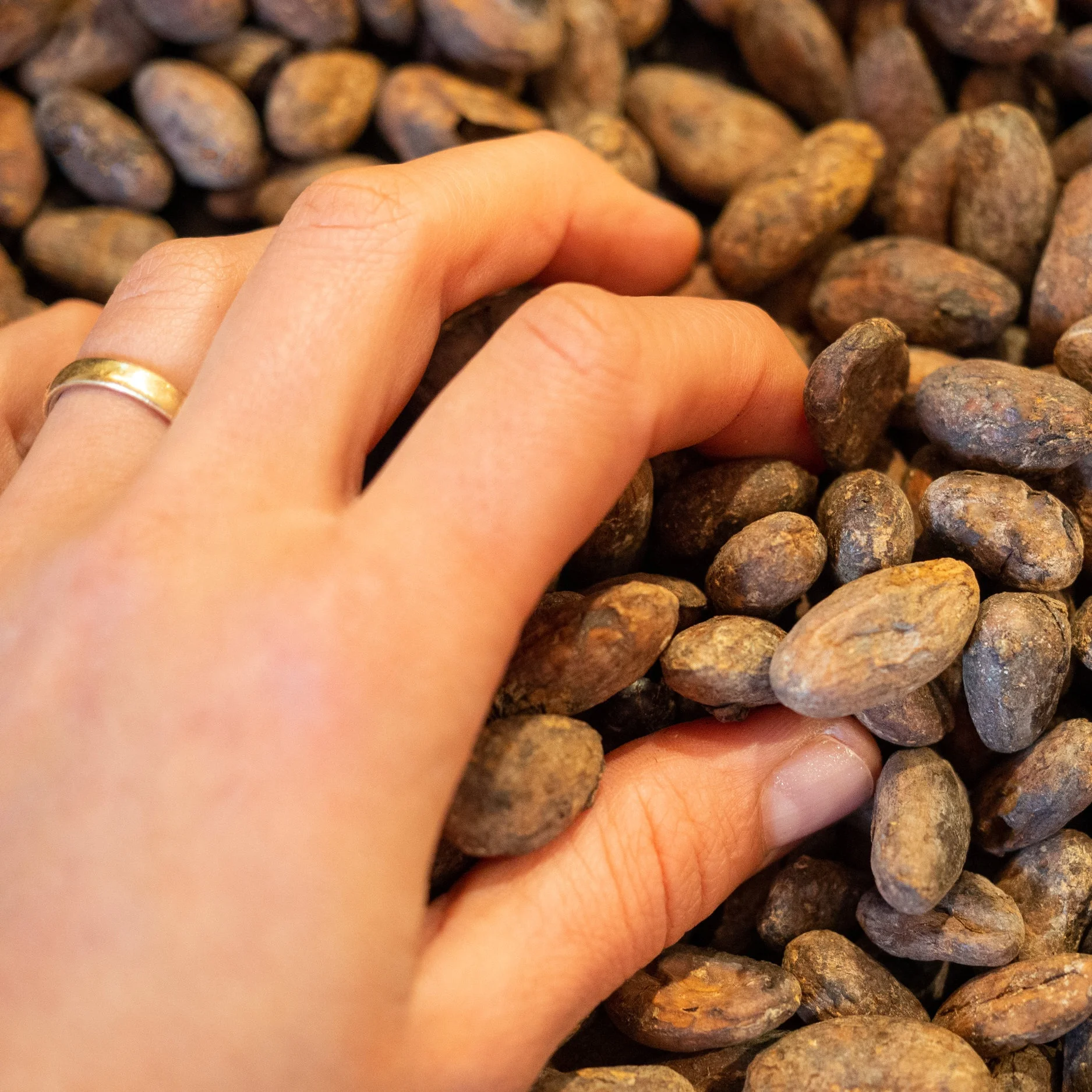How to make chocolate at home - Part 1 Roasting
Making chocolate at home - sounds too good to be true? No you can make chocolate at home without fancy equipment! I want to show you how.
Roasting is a crucial step to for flavor development and today I roast with a coffee roaster. But I started out with roasting raw beans in the oven or in a usual pan.
I might be too much of a control freak - but I don’t like to roast in an oven, because I don’t think I can control the heat good enough. In a pan I see and smell immediately if something starts to burn or smells weirs. That’s why I prefer roasting in a pan, but feel free to try it in an oven as well.
What you need to roast at home:
pan
stove
spoon to turn around beans while roasting
IR thermometer would be nice to have, but is not really necessary
tray to cool down beans
raw beans (you can get beans here)
How you roast:
Turn the stove on to medium heat and heat up pan
Measure your first batch: 1.25lb or 570g of raw beans
Pick out leaves, stones, debris or other things that are not cacao beans
Transfer beans into pan
Stir occasionally and monitor the beans
If you hear the first pop (yes, like popcorn) you are getting closer to the end
Once most of your beans are popping and your kitchen smells like freshly baked brownies, remove pan from heat
Try to peel off the husk from the bean. Is it easy removable? The you are done. Great Job!
Try a bean. Does it taste like unripe green banana? Then you’re not done yet. Put your pan back on the stove.
It really depends on the beans you are roasting and the stove you’re using, but the roasting process should take between 15-20 minutes and you should have reached temperatures above 212°F or 100°C.
Allow to cool down over night
This is not at all a scientific process. Roasting with a pan depends a lot on your senses. What do you smell, feel and hear. That’s why I want to encourage you to just try it, have fun and enjoy the ride!
The cacao bean is a raw product. It’s very likely that you will find strings, leaves or other debris in your bag. Remove it before you roast. Leaves easily get burnt and will your chocolate might taste more toasty than you want it.
A little bit more about what’s happening when we roast:
Raw cacao beans have a residue water content of about 6-8%. Through roasting we minimize the water content to 1-3%. While we heat up the beans water is evaporating, but the water can’t get out because of the husk. The pressure in the bean eventually gets so high that the water steam is breaking through the husk - that’s when we hear the beans popping and cracking.
But this is only one small part happening during roasting.
A lot of different chemical reactions are going on, all at the same time and develop our desired chocolate flavors. One important reaction is called Maillard Reaction. This reaction is responsible for the typical roast aromas we find in other foods as well. A fried mushroom tastes different than a raw mushroom, right?
Proteins and sugars in the bean react and create whole new flavors, some more nutty, others more carameley.


